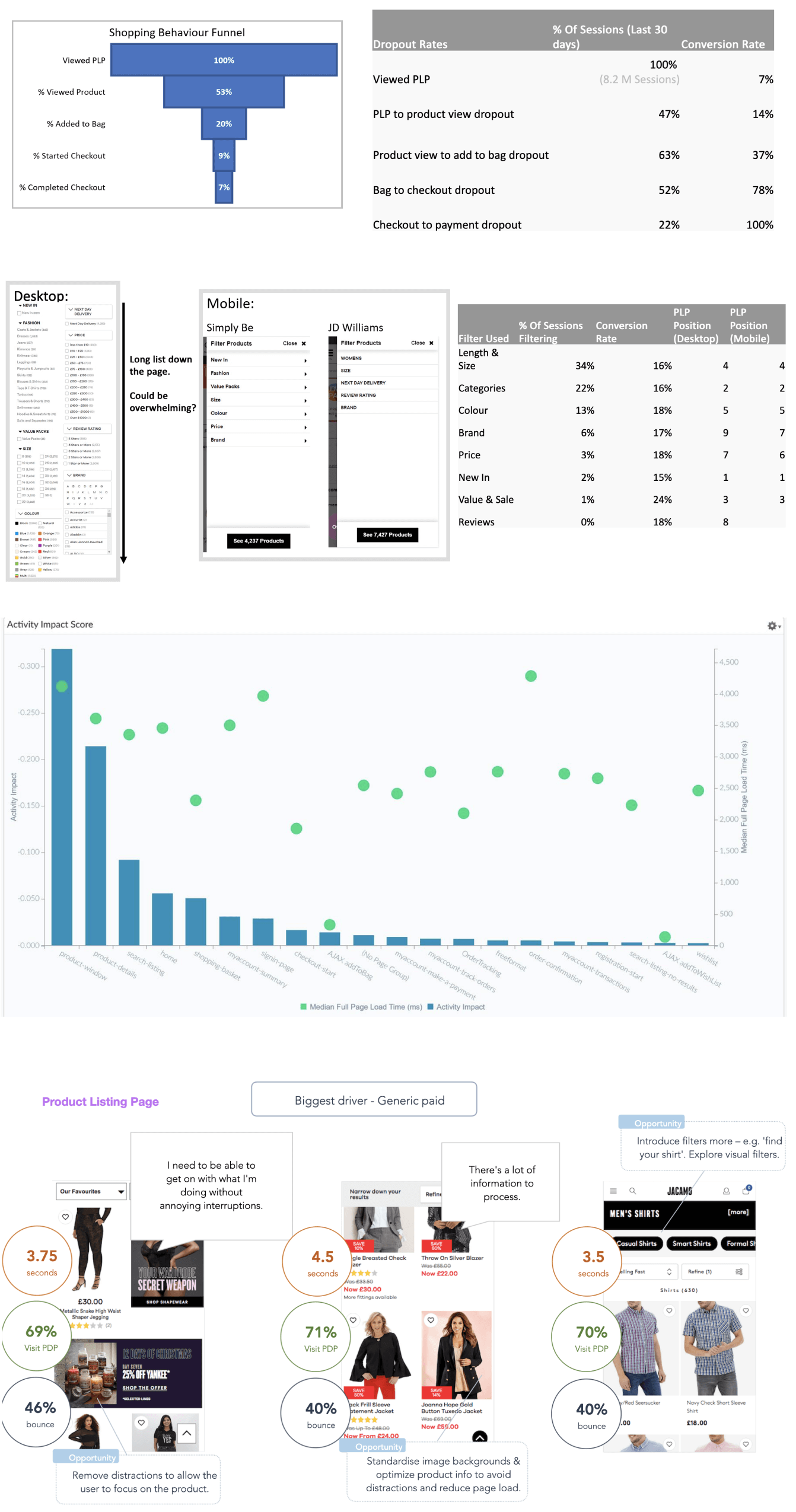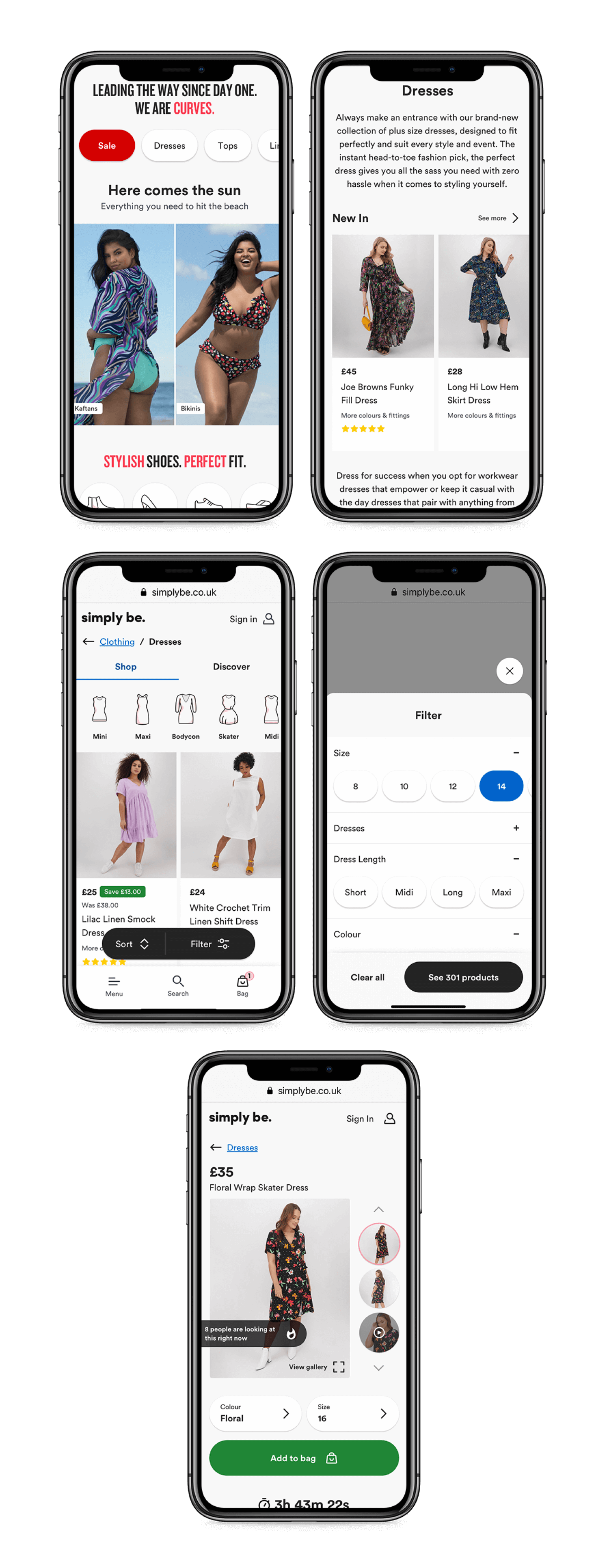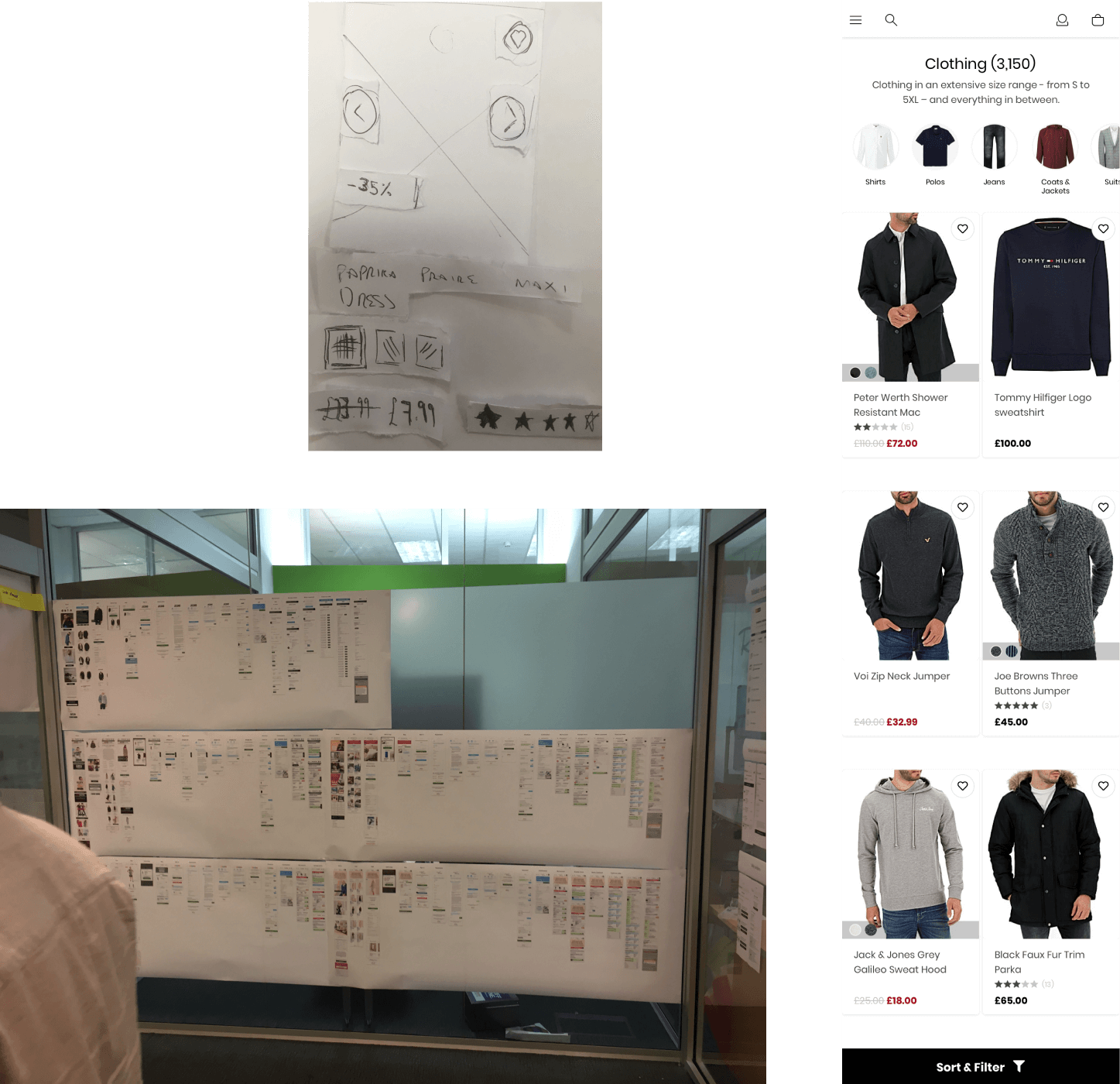N Brown - Online Retailer
Background
N Brown is the parent company of brands Simply Be, Jacamo, JD Williams, as well as many more. Each brand has a different demographic so each design solution has to cater for those audiences. But also has to be efficient in terms of development time.
Team
4 designers, 2 design managers, 1 researcher, CRO, FE/BE developers, product managers, SEO
Details
During my time at N Brown the company was going through a digital transformation. The first few projects I led on were very much BAU (business as usual) – general optimisations to the site that could increase site conversion and revenue. The technology the ecommerce sites were built on is very outdated and over time that meant there was so much debt debt and inefficiencies in our process. So the technology started redesigning and rebuilding the Simply Be site in React. Two of the outcomes we wanted to achieve with this project was a faster shopping experience for customers and a more efficient environment for developers (leading to a more regular release cycle). Both would result in an increase of revenue for the business.




